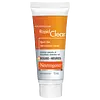What's inside
What's inside
 Key Ingredients
Key Ingredients

 Benefits
Benefits

 Concerns
Concerns

 Ingredients Side-by-side
Ingredients Side-by-side

Water
Skin ConditioningGlycerin
HumectantDimethicone
EmollientIsocetyl Stearate
EmollientNiacinamide
SmoothingIsopropyl Lauroyl Sarcosinate
Skin ConditioningSilica
AbrasiveAmmonium Polyacryloyldimethyl Taurate
Emulsion StabilisingMethyl Methacrylate Crosspolymer
Sodium Hydroxide
BufferingPoloxamer 338
EmulsifyingPolysorbate 80
EmulsifyingMannose
HumectantXanthan Gum
EmulsifyingZinc PCA
HumectantIsohexadecane
Emollient2-Oleamido-1,3-Octadecanediol
Skin ConditioningCapryloyl Salicylic Acid
ExfoliatingCaprylyl Glycol
EmollientPiroctone Olamine
PreservativeMyristyl Myristate
EmollientAcrylamide/Sodium Acryloyldimethyltaurate Copolymer
Emulsion StabilisingSorbitan Oleate
EmulsifyingDisodium EDTA
Potassium Cetyl Phosphate
EmulsifyingVitreoscilla Ferment
Skin ConditioningAluminum Starch Octenylsuccinate
AbsorbentGlyceryl Stearate Se
EmulsifyingParfum
MaskingWater, Glycerin, Dimethicone, Isocetyl Stearate, Niacinamide, Isopropyl Lauroyl Sarcosinate, Silica, Ammonium Polyacryloyldimethyl Taurate, Methyl Methacrylate Crosspolymer, Sodium Hydroxide, Poloxamer 338, Polysorbate 80, Mannose, Xanthan Gum, Zinc PCA, Isohexadecane, 2-Oleamido-1,3-Octadecanediol, Capryloyl Salicylic Acid, Caprylyl Glycol, Piroctone Olamine, Myristyl Myristate, Acrylamide/Sodium Acryloyldimethyltaurate Copolymer, Sorbitan Oleate, Disodium EDTA, Potassium Cetyl Phosphate, Vitreoscilla Ferment, Aluminum Starch Octenylsuccinate, Glyceryl Stearate Se, Parfum
Salicylic Acid 2%
MaskingAlcohol
AntimicrobialAlcohol Denat.
AntimicrobialAmmonia
BufferingBenzalkonium Chloride
AntimicrobialButylene Glycol
HumectantC12-15 Alkyl Lactate
EmollientC13-14 Isoparaffin
EmollientCapryloyl Glycine
CleansingCedrus Atlantica Bark Extract
PerfumingCetyl Lactate
EmollientCinnamomum Zeylanicum Bark Extract
AntimicrobialCocamidopropyl Pg-Dimonium Chloride Phosphate
Cyclopentasiloxane
EmollientDehydroxanthan Gum
Emulsion StabilisingGlycerin
HumectantHamamelis Virginiana Water
AstringentLaureth-7
EmulsifyingParfum
MaskingPhenethyl Dimethicone
EmollientPhenoxyethanol
PreservativePolyacrylamide
Polysorbate 20
EmulsifyingPortulaca Oleracea Extract
Skin ConditioningPPG-2 Isoceteth-20 Acetate
EmulsifyingPropylene Glycol
HumectantSarcosine
Skin ConditioningTetrasodium EDTA
Water
Skin ConditioningSalicylic Acid 2%, Alcohol, Alcohol Denat., Ammonia, Benzalkonium Chloride, Butylene Glycol, C12-15 Alkyl Lactate, C13-14 Isoparaffin, Capryloyl Glycine, Cedrus Atlantica Bark Extract, Cetyl Lactate, Cinnamomum Zeylanicum Bark Extract, Cocamidopropyl Pg-Dimonium Chloride Phosphate, Cyclopentasiloxane, Dehydroxanthan Gum, Glycerin, Hamamelis Virginiana Water, Laureth-7, Parfum, Phenethyl Dimethicone, Phenoxyethanol, Polyacrylamide, Polysorbate 20, Portulaca Oleracea Extract, PPG-2 Isoceteth-20 Acetate, Propylene Glycol, Sarcosine, Tetrasodium EDTA, Water
 Reviews
Reviews

Ingredients Explained
These ingredients are found in both products.
Ingredients higher up in an ingredient list are typically present in a larger amount.
Glycerin is already naturally found in your skin. It helps moisturize and protect your skin.
A study from 2016 found glycerin to be more effective as a humectant than AHAs and hyaluronic acid.
As a humectant, it helps the skin stay hydrated by pulling moisture to your skin. The low molecular weight of glycerin allows it to pull moisture into the deeper layers of your skin.
Hydrated skin improves your skin barrier; Your skin barrier helps protect against irritants and bacteria.
Glycerin has also been found to have antimicrobial and antiviral properties. Due to these properties, glycerin is often used in wound and burn treatments.
In cosmetics, glycerin is usually derived from plants such as soybean or palm. However, it can also be sourced from animals, such as tallow or animal fat.
This ingredient is organic, colorless, odorless, and non-toxic.
Glycerin is the name for this ingredient in American English. British English uses Glycerol/Glycerine.
Learn more about GlycerinParfum is a catch-all term for an ingredient or more that is used to give a scent to products.
Also called "fragrance", this ingredient can be a blend of hundreds of chemicals or plant oils. This means every product with "fragrance" or "parfum" in the ingredients list is a different mixture.
For instance, Habanolide is a proprietary trade name for a specific aroma chemical. When used as a fragrance ingredient in cosmetics, most aroma chemicals fall under the broad labeling category of “FRAGRANCE” or “PARFUM” according to EU and US regulations.
The term 'parfum' or 'fragrance' is not regulated in many countries. In many cases, it is up to the brand to define this term.
For instance, many brands choose to label themselves as "fragrance-free" because they are not using synthetic fragrances. However, their products may still contain ingredients such as essential oils that are considered a fragrance by INCI standards.
One example is Calendula flower extract. Calendula is an essential oil that still imparts a scent or 'fragrance'.
Depending on the blend, the ingredients in the mixture can cause allergies and sensitivities on the skin. Some ingredients that are known EU allergens include linalool and citronellol.
Parfum can also be used to mask or cover an unpleasant scent.
The bottom line is: not all fragrances/parfum/ingredients are created equally. If you are worried about fragrances, we recommend taking a closer look at an ingredient. And of course, we always recommend speaking with a professional.
Learn more about ParfumWater. It's the most common cosmetic ingredient of all. You'll usually see it at the top of ingredient lists, meaning that it makes up the largest part of the product.
So why is it so popular? Water most often acts as a solvent - this means that it helps dissolve other ingredients into the formulation.
You'll also recognize water as that liquid we all need to stay alive. If you see this, drink a glass of water. Stay hydrated!
Learn more about Water